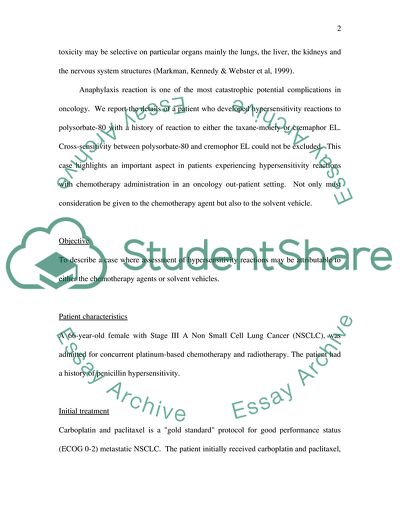Cite this document
(Acute Hypersensitivity Reactions to Chemotherapy Case Study, n.d.)
Acute Hypersensitivity Reactions to Chemotherapy Case Study. Retrieved from https://studentshare.org/health-sciences-medicine/1714976-acute-hypersensitivity-to-chemotherapy
Acute Hypersensitivity Reactions to Chemotherapy Case Study. Retrieved from https://studentshare.org/health-sciences-medicine/1714976-acute-hypersensitivity-to-chemotherapy
(Acute Hypersensitivity Reactions to Chemotherapy Case Study)
Acute Hypersensitivity Reactions to Chemotherapy Case Study. https://studentshare.org/health-sciences-medicine/1714976-acute-hypersensitivity-to-chemotherapy.
Acute Hypersensitivity Reactions to Chemotherapy Case Study. https://studentshare.org/health-sciences-medicine/1714976-acute-hypersensitivity-to-chemotherapy.
“Acute Hypersensitivity Reactions to Chemotherapy Case Study”. https://studentshare.org/health-sciences-medicine/1714976-acute-hypersensitivity-to-chemotherapy.


